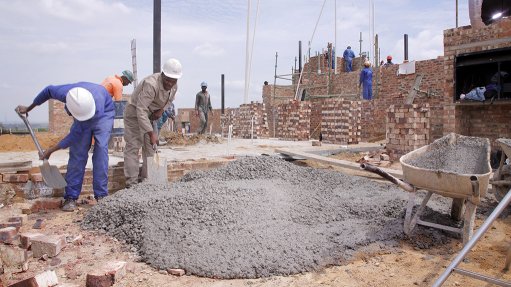Want power system stability? Go for nuclear
One of the difficulties with a column like this is that the people who read it have a variety of expectations. One thing I cannot do is to write about what I did last week with my dog (or my friend) in anecdotal form and expect anybody to like what I write. People these days are getting less and less interested in one another and more interested in what they can say to somebody by cellphone, laptop or iPad.
Thus, for this column to succeed, I have to make it interesting and funny. Okay, so this week’s topic is: “Why do we need nuclear power?” Funny. Interesting. Hopefully.
Could we not use renewable energy? The simple answer is no, not for all we need. I guess that most people realise that at night time the sun goes out. I am sure some people may also realise that, while the wind does blow along the coast in summer, this is not so in winter. Inland, the wind hardly blows at all. Right now, we have a total installed capacity of wind and solar power of about 2 000 MW, which is about 5% of Eskom’s installed capacity of other power generation (coal, nuclear, hydro and gas fired). Even if every desert was covered with solar panels and every mountain top had a wind turbine, it is a simple fact that, on a still, windless night, you cannot rely on renewable power – you have to have something which picks up the baseload.
It happens that you cannot use a coal-fired power station to just ‘take over’ when the wind drops at night – coal stations take up load gradually. You can use hydro or gas turbines to take over, but there is a limit to South Africa’s hydro resources and gas turbines are very expensive. So, the simple answer is that we cannot see a future in renewable energy other than a form of negative load.
Could we not just build more coal-fired power stations? It does so happen that South Africa has fantastic resources of coal. We have enough coal that could be used for power generation to last 200 years. Unfortunately, most of the coal is at the centre of the country, and there are some big electricity loads that are not at the centre of the country.
It is always possible to generate power in the centre of the country and send it to the coast (which we do at present) but there is a matter of power line stability – for various technical reasons, there is a limited amount of power that we can send distances of 1 200 km. Further, by linking the coastal electricity load to an upcountry supply, we run the risk of losing it if the power lines are interrupted. Koeberg was built not so much for supplying Cape Town as it was for limiting the amount of power transferred from the centre of the country.
So, for growth of the power system, the future has to be nuclear. Nuclear power stations along the coast will provide a firm power capacity and also power system stability.
The question is where to locate the nuclear power station. The answer to this, a truth as old as the hills, is that it should be located where a group of politicians have bought land that they are prepared to sell for profit to power station developers.
The ideal location is , in fact, not the Cape coast. It is planned to link Port Elizabeth and Cape Town to the 765 kV interconnectors and build a 400 kV line Port Elizabeth/East London to the northern Transkei border. The power line stability transfer limits to the Western Cape and the Eastern Cape will fall away. The logical nuclear station location will then be at the northern Transkei border, since it can stabilise the KwaZulu-Natal voltage profile, stabilise against Gauteng major fault, supply the Western Cape and the Eastern Cape for contingency with loss of a main station, supply the Western Cape and the Eastern Cape for contingency loss of 765 kV interconnect, and supply the Western Cape and the Eastern Cape for contingency loss of Koeberg.
So there you have it.
Comments
Announcements
What's On
Subscribe to improve your user experience...
Option 1 (equivalent of R125 a month):
Receive a weekly copy of Creamer Media's Engineering News & Mining Weekly magazine
(print copy for those in South Africa and e-magazine for those outside of South Africa)
Receive daily email newsletters
Access to full search results
Access archive of magazine back copies
Access to Projects in Progress
Access to ONE Research Report of your choice in PDF format
Option 2 (equivalent of R375 a month):
All benefits from Option 1
PLUS
Access to Creamer Media's Research Channel Africa for ALL Research Reports, in PDF format, on various industrial and mining sectors
including Electricity; Water; Energy Transition; Hydrogen; Roads, Rail and Ports; Coal; Gold; Platinum; Battery Metals; etc.
Already a subscriber?
Forgotten your password?
Receive weekly copy of Creamer Media's Engineering News & Mining Weekly magazine (print copy for those in South Africa and e-magazine for those outside of South Africa)
➕
Recieve daily email newsletters
➕
Access to full search results
➕
Access archive of magazine back copies
➕
Access to Projects in Progress
➕
Access to ONE Research Report of your choice in PDF format
RESEARCH CHANNEL AFRICA
R4500 (equivalent of R375 a month)
SUBSCRIBEAll benefits from Option 1
➕
Access to Creamer Media's Research Channel Africa for ALL Research Reports on various industrial and mining sectors, in PDF format, including on:
Electricity
➕
Water
➕
Energy Transition
➕
Hydrogen
➕
Roads, Rail and Ports
➕
Coal
➕
Gold
➕
Platinum
➕
Battery Metals
➕
etc.
Receive all benefits from Option 1 or Option 2 delivered to numerous people at your company
➕
Multiple User names and Passwords for simultaneous log-ins
➕
Intranet integration access to all in your organisation

















